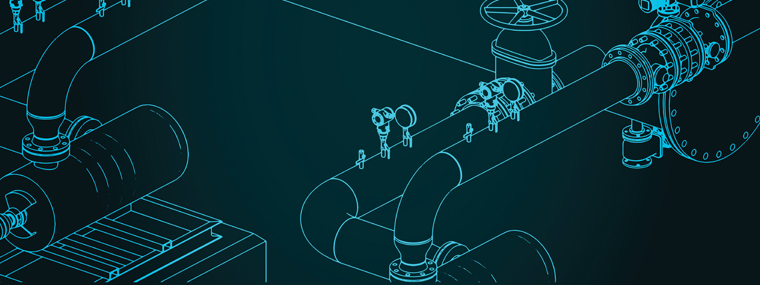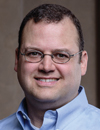
When to Repipe Your Community
And How To Fund It
By Eric Lecky / Published August 2022

In any condominium community, maintenance and repairs are inevitable. Over time, however, building materials will begin to fail and need to be replaced. Pipes are no exception. Depending on the material, pipes may begin to develop cracks and leaks within a few decades of installation, sometimes sooner.
The question then becomes, should you just repair the pipe or should you replace the entire piping system?
Repair vs. Replace
The decision to repair or replace often comes down to one primary factor—money. Essentially, when does the cost to repair become greater than the cost to replace?
To calculate repair costs, start by carefully tracking your pipe maintenance expenses using an incident tracking tool, like a leak log. Be sure to capture all the costs of repair, such as external contractor fees, higher costs for emergency and after-hour services, water extraction and mold remediation, cost of materials, and deductibles for insurance claims.
In addition to the straightforward expenses of damage and repair, consider the less-visible costs. These include the following:
- Insurance—Recurring and catastrophic failures in a piping system and the ensuing costs to repair related damages can cause your insurance rates and deductibles to skyrocket. Eventually, insurers may even cancel your policy, and you’ll find it difficult to secure a new carrier.
- Deferred maintenance—While maintenance staff address piping failures, they aren’t available to perform their regular duties. As maintenance programs fall behind and associations redirect budgets toward plumbing, any neglected non-piping issues become more severe, and new problems may emerge.
- Brand reputation—Continual failures in your pipes and damage to individual living units create bad word of mouth. That makes it more difficult for condominium owners to protect the value of their investment and sell their units.
- Disgruntled unit owners—Simply put, unhappy condominium owners aren’t going to sit quietly, nor should they. The hassle of dealing with complaints and even lawsuits quickly add up to real dollars.
By taking a comprehensive view of what your community is paying to repair a failed piping system, you can better understand when it’s more economical to repipe.
Include Pipe Assessments in Your Capital Improvement Planning
In the next decade, 40 percent of condominium communities will need to replace at least one major piping system. Why? The reasons are pipe age, followed by manufacturer and construction defects, and then environmental factors like poor water quality, municipal piping issues, or exposure to sea air. Don’t let a costly repipe project sneak up on you. Include periodic pipe assessments in your capital improvement planning. Certified experts—usually forensic engineers—will provide detailed reports that explain the condition of your piping system. Comprehensive providers will include guidance and recommendations to address risks and failures. If findings indicate that piping must be replaced, they’ll also provide a rough estimate of the potential project cost and timeline. Perform your first assessment 20 years after construction or as soon as you detect signs that your piping is failing. Repeat inspections every 5–10 years depending on results. For more information, visit sagewater.com/pipes-in-capital-improvement-planning.
Funding Pipe Replacement
Consider these four ways to fund a repipe project:
- Do you already have the money in your reserves to cover the costs? Today, pipe replacement and other plumbing issues are rarely considered in reserve studies, so money may not be on hand to cover the costs.
- If you can’t fund with reserves, is the project small enough that you can comfortably issue a special assessment to cover the costs? Large special assessments can overwhelm owners and residents, potentially forcing them out of the community.
- Though lending rates are increasing, financing may be your best option. Favorable terms could allow you to finance a larger project like pipe replacement for up to 20 years. Then you might pay off the loan with modest increases to monthly assessments rather than issuing a large special assessment. You might also take out a loan and pay it off through reserves.
- Of course, you can also take a hybrid approach by pulling from reserves or special assessing for part of the cost and financing the rest with a loan.
Another Worthwhile Consideration
Many programs are emerging to help buildings become more energy- and water-efficient. Keep an eye out for these since they may offer grants or other financing options that you can use to fund a repipe project.
Loan Pre-Qualification and Project Bundling
If you are considering financing all or part of your project, begin the pre-qualification process as soon as you know you need to repipe, but don’t secure the loan until you have a final scope of work and contract amount since the numbers can change as the scope gets refined.
Also, if your association is pre-qualified to borrow more than you need for pipe replacement, consider the benefits of bundling multiple capital improvement projects under one larger loan instead of taking out multiple smaller loans.
Explore Your Options
Repiping your community can be a substantial capital expense. Explore a variety of financing options to help your homeowners fund it.
Eric Lecky
Chief Growth Officer, SageWater
Eric Lecky (elecky@sagewater.com) is the Chief Growth Officer at SageWater, North America’s leading pipe replacement contractor. SageWater is headquartered in Alexandria, Virginia, with offices nationwide. Over the past 30 years they have replaced more than 35 million feet of pipe in over 100,000 occupied residential units. For more information, visit sagewater.com.






